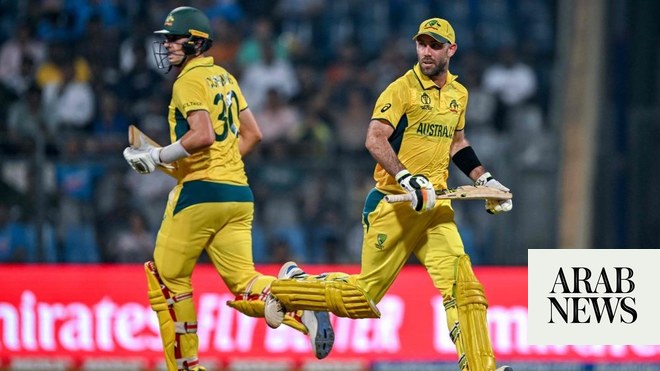
Last week’s assertion that batting was dominating the bowling at the 2023 ODI World Cup provoked the need for more detailed scrutiny.This was partly based on a recognition that South Africa’s comprehensive victory over New Zealand was not just because they mounted a formidable 357 for four, but also because they bowled impressively. In its previous match against Australia, New Zealand almost chased down 388 and, on this basis, would have been expected to get closer to the target set by South Africa.
As it was, they were short by 190 runs, bowled out in 35.3 overs. From the outset, under lights in the cooler evening conditions, South Africa’s quick bowlers obtained some movement and hostility with the new ball, reducing New Zealand to 67 for four from 15.2 overs. This was a position from which they never recovered, South Africa’s spinner claiming four wickets to illustrate all round strength.
On the following day, India amassed 357 for four against Sri Lanka, whom they enfiladed in a mere 19.4 overs for 55 all out. This was the lowest second-innings score at this World Cup. A scintillating bowling performance from India’s quick bowlers, who extracted movement and bounce with the new white ball, reduced Sri Lanka to 14 for six at one stage.
The vehemence of the performance led one former Pakistani player to question if India had been supplied with a cricket ball of different qualities to everyone else. Nothing should be taken away from the ability of India’s current bowlers to deliver consistently hostile lines and lengths.
They were at it again against South Africa last Sunday. After posting 326 for 5, India’s quick bowlers took early wickets before the spinners worked their way through the rest of the innings, claiming seven wickets between them. South Africa, second placed in the table, were demolished for 83 in 27.3 overs. India is imperious and dominant, an unstoppable, invincible force. Its dismissal of two teams for under 100 in the same tournament is the second time this has been achieved in ODI World Cup history. One fears for the Netherlands next Sunday in Bengaluru.
At the other end of the scale, your columnist has sensed that the proportion of high totals being posted in the first innings of this World Cup is higher than in previous ones. In order to test this feeling, an analysis of all matches in ODI World Cup tournaments since 1987 was undertaken.
The start year was chosen because it was the first to feature 50 instead of 60 overs. In that year, the mean first innings score was 261. In subsequent years, until 2015, the mean was lower, in a range of 216 to 250. Matches that were either forfeited or were rain affected, with results determined by DLS, were excluded.
Comparing averages over the years requires caution. Weather, ground and pitch conditions vary between countries. Boundary dimensions have also varied. Restrictions on fielders within a 30-yard circle have changed since their emergence in 1980-81 in Australia and first incorporated into the 1992 World Cup.
In 2005, the ICC named them power plays. Amendments were made in 2008, 2011 and 2015. The latter are the ones which have since applied. In the first 10 overs, a maximum of two players are allowed outside of the circle. Between overs 11 and 40, a maximum of four fielders are allowed outside and in the final 10 overs, a maximum of five. This prevents ultra negative tactics being deployed.
In 2011, two new balls were used per innings, one from each end, providing batters with a harder, more visible ball to hit, for longer. All of these adjustments were batter friendly.
Therefore, it should not be a surprise that, in 2015, the average number of first innings runs scored increased to 272 compared with 250 in 2011. There was a slight fall in 2019 to 265 in English conditions. In 2023, with ninety percent of matches completed, the average has been 289. Moreover, the tournament has witnessed the two highest aggregate matches in ODI World Cup history, 771 and 754 runs. Rain in Bengaluru may well have prevented a new high as Pakistan chased down New Zealand’s target of 402. Seven of the highest ever aggregates have been scored in the last two World Cups.
This thirst for runs, encouraged by playing regulations designed to slake it, appeals to crowds. Teams are set up to score as many of them as possible, attempting to put the game out of reach of opponents. Yet, this approach does not always work. A curious feature of this World Cup has been the pattern of results for the team which has won the toss. Only a quarter of those which decided to bat first have won the match. On only a third of occasions on which teams have asked the opposition to bat have they won the match.
This may reflect a changing dynamic within ODIs. In the quest for runs, teams are not cautious for long. Unlike earlier World Cups, when medium-pace bowlers sought to contain scoring in conditions which favored them, today’s bowlers are either quicks or spinners.
There appears to be more emphasis on getting batters out, but this is difficult to prove. It is an adage that the equivalent of a century for a bowler is a five-wicket haul. In 40 World Cup matches in 2023, 32 centuries have been scored, but only five bowlers have achieved five-wicket hauls.
Restrictions placed on bowlers and fielders appear to have favored batting, but without creating significant imbalance. The new dynamics do appear to have reduced the incidence of close finishes, in which both teams have roughly equal chances of winning in the final over.
Even in the astonishing, gripping, improbable result achieved by Australia, aka, Glenn Maxwell, four overs remained. It was Afghanistan’s bowlers and fielders who made errors. Bat should not have triumphed over ball. On the occasion, temperament, experience and genius held sway.












